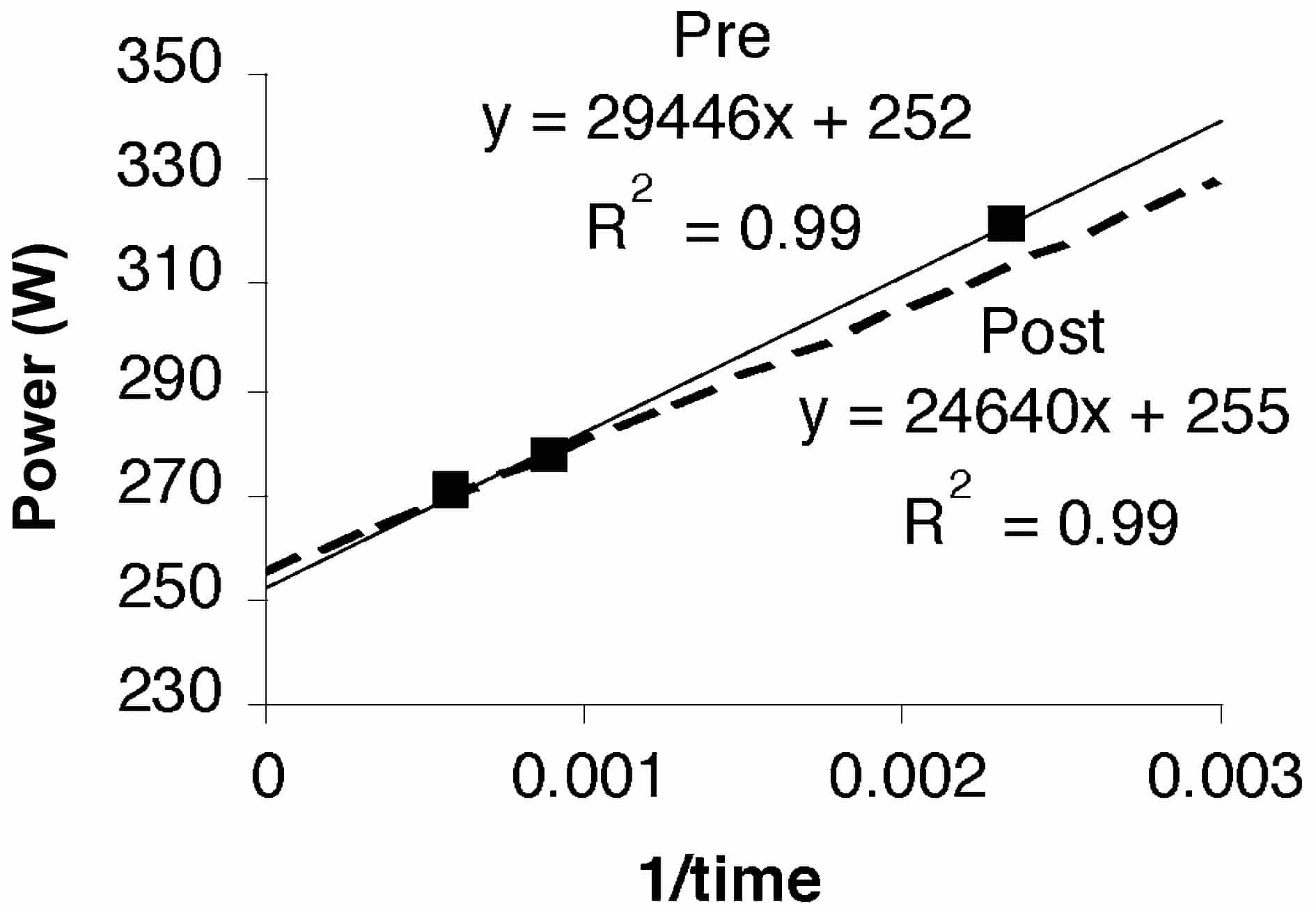Although inspiratory muscle training (IMT) improves cycling time-trial (TT) performance (Romer et al. 2002), mechanisms explaining such improvements remain unknown. Time-trial performance in competitive cyclists is strongly related to critical power (CP) (Smith et al. 1999). We questioned whether an increase in CP was a mechanism by which time-trial performance was improved in trained cyclists following a 6-wk IMT regimen.
Following local ethics committee approval and written informed consent 12 subjects were equally divided into either a pressure-threshold IMT group or a sham hypoxic placebo group. The IMT group performed 30 dynamic inspiratory efforts twice daily using a pressure-threshold device (POWERbreathe¿), with the initial load set at 50 % baseline maximal inspiratory pressure (MIP). Placebo subjects used a sham hypoxic trainer 5 d wk-1 for 15-min (Sonetti et al. 2001). The power-time relationship, i.e., CP and anaerobic work capacity (AWC), was calculated using the power-1/time mathematical model (Whipp et al. 1982) following the completion of 3 fixed work-rate exhaustive trials. Prescribed powers were chosen to induce exercise intolerance within 3-10, 10-20, and 20-30 min.
An increase in MIP from (mean ± S.D.) 157.3 ± 12.3 to 179.1 ± 22.6 cmH2O (+13.7 ± 9.2 %) was observed following IMT (P < 0.05, repeated measures ANOVA). No change was observed following placebo (pre vs. post: 171.2 ± 19.6 vs. 165 ± 15.9 cmH2O). There was no change in CP (271 ± 66 vs. 269 ± 65 W) or AWC (25.2 ± 6.3 vs. 29.9 ± 9.7 kJ) following IMT (Fig. 1). Placebo also had no effect on CP (238 ± 25 vs. 236 ± 16 W) or AWC (34.5 ± 15.3 vs. 38.9 ± 17.4 kJ). Following IMT there was a non-significant reduction in min ventilation (Î{special}E) and an equivalent Î{special}E was characterised by a higher tidal volume, an increase in mean inspiratory flow rate and a decrease in mean expiratory flow rate. However, these changes were not always accompanied by improvements in cycling endurance.
These results suggest an increase in CP as an unlikely mechanism by which TT performance is improved in trained cyclists following IMT. We suggest other mechanisms are operative, such as placebo and test familiarisation effects, attenuated perceptual responses, an increase in the mechanical efficiency of ventilation, favourable changes in acid-base balance, and/or attenuated inspiratory muscle fatigue.

